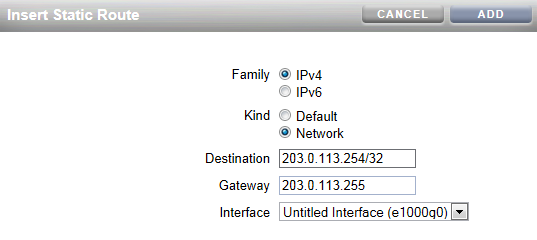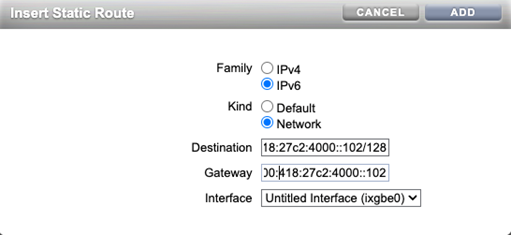Setting Up Network Interfaces and Static Routing (BUI)
To ensure the appropriate network interfaces are used for the replication connections between source and target appliances, configure IPv4 static /32 or IPv6 static /128 (host-specific) routes.
If you are setting up replication for a cluster configuration, select a singleton (unlocked) network interface so that following a cluster takeover or failback, the interface will move to the node where the replication work is being done.

